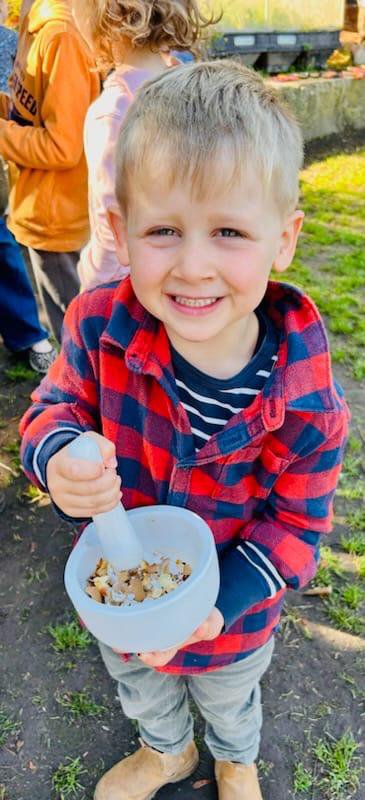
Eco Literacy, Friends & Pests In Our Gardens: Part 2
Indigenous heart intelligence and biodynamic regenerative agriculture
From Indigenous culture we learn that when the wattles flower, the mullet fish run. In the Time of Murrai’yunggoray (September - October), as the weather warms and the Miwa Gawaian (Waratah) buds swell, the D’harawal people began their major ceremonies in celebration of the new life promised by this season.
In Glenaeon’s gardens we invite everyone to practise active observation before deciding on our actions of care. We sing to the garden “what story, what story do you tell? What story do you tell?” and then we articulate:
- The bees are saying “thank you for planting the zinnia seeds and caring for them”; the zinnias are saying “thank you to the bees for helping to pollinate us so we can make seeds for new flowers”.
- Our Mother Earth is saying “I am so thirsty without rain - will you please water me today? If my soil gets too dry the insects will be thirsty and eat the plants to find water.”
- The bush turkeys parading and scratching in the garden bed inform us that the lettuces need some protection.
Setting boundaries
While newly planted flowers and seeds are getting established in the soil we protect them with nets or fences built by the students. As plants grow bigger and stronger we uncover the plants so that humans and animals can harvest what they need. This is a principle of both biodynamic and Indigenous agriculture: we must ensure that the birds and animals have enough to eat too.
In Glenaeon's gardens:
● We practise principles that Indigenous and wise farmers share around the world: never pick the first or the last of the crop for the future of life itself. (For example, when we harvest our lettuce or silverbeet we always leave 3 leaves so the plant keeps growing new leaves).
● We have fish in the water garden to help keep mosquitoes away. Some plants are particularly helpful in deterring certain insects, and are carefully planted around gathering and play areas: tansy, with a camphor-like scent that repels ants and flies, while citronella and lemongrass' smells deter mosquitoes.
● We scatter crushed eggshells around particular plants to discourage snails and slugs that might be nibbling too much of our food. When Preschool and Castlecrag students find snails and slugs they carefully move them to non (human) edible bushes (or even build homes for them with leaves and sticks), and when students find inch grubs they feed them to our grateful chickens.
● We use tree paste to cover pruned branches or damaged trees to protect them from ants and other insects while they heal. Biodynamic tree paste is made with 3 equal parts of clay, cow manure and sand, mixed with water to make a spreadable paste.
Indigenous peoples have totems and special animal images to help keep unwanted visitors away. We have scarecrows, representing a human presence in the garden. While the kookaburras may laugh at our scarecrows, we like to think of them as friends: ever so helpful at catching native rodents.
Want to join our holiday chicken care team? Got a question, story or idea to share? The Glenaeon Garden Team would love to hear from you! s.frain@glenaeon.nsw.edu.au
Sandra Frain (and Parent Garden Volunteers)
Gardening Teacher




